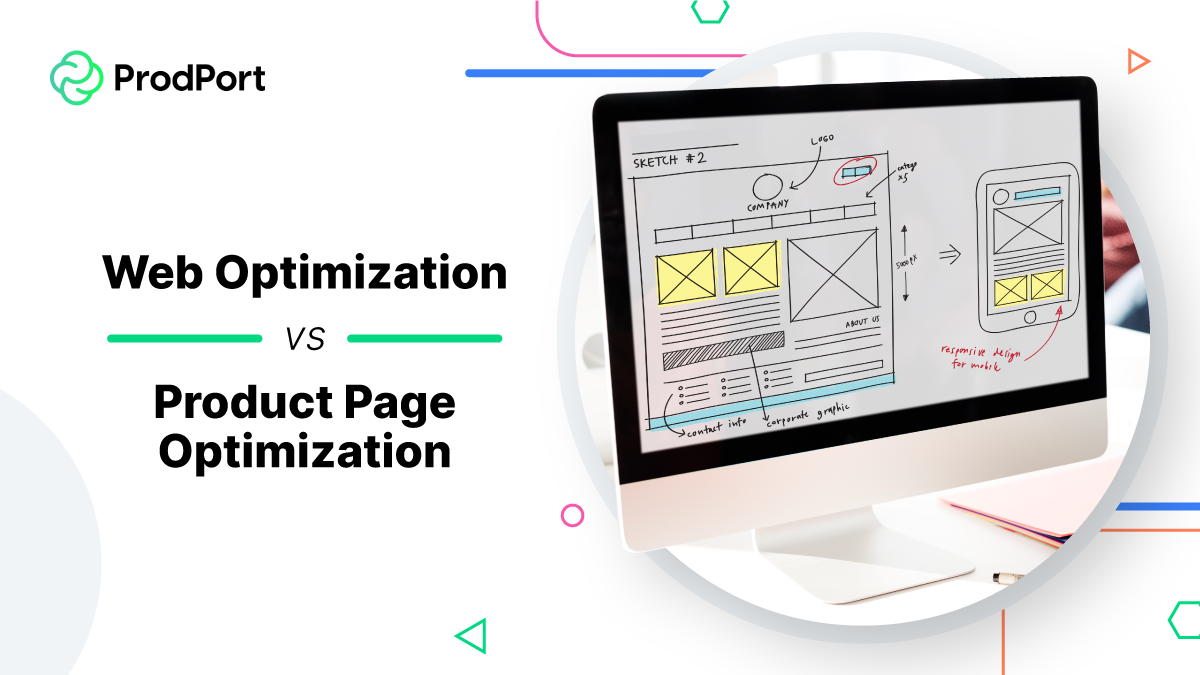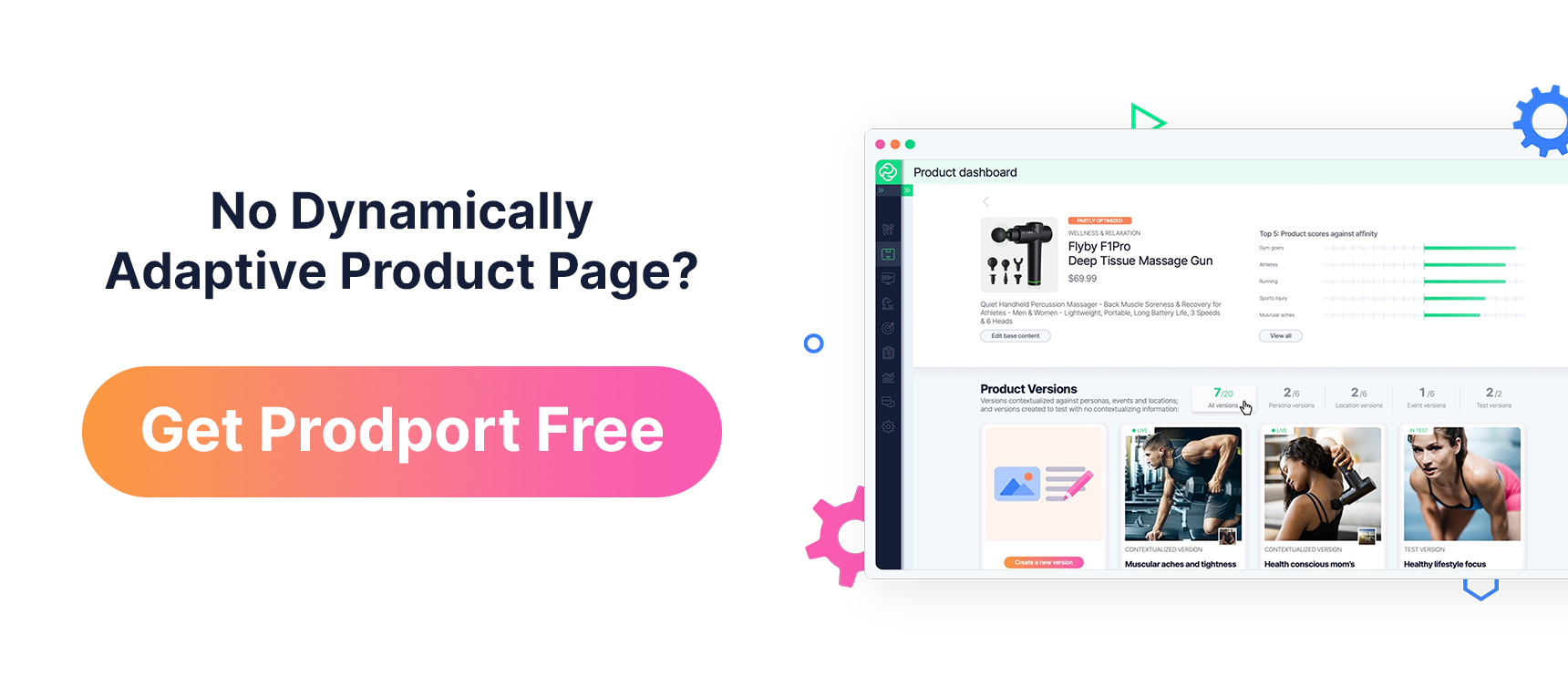In our previous blog post titled “Here’s Why Youd Product Page Can’t Be Personalized…Until Now,” we discussed web optimization tools, and why they’re ill-suited for Product Detail Pages at a high level. Today, we’re going to dig a little deeper into the Web Optimization vs Product Page Optimization conundrum, in the context of these three aspects:
- Overall Approach
- Technical Approach
- User Experience
#1 Overall Approach
In simple terms, the difference between web optimization and product page optimization comes down to this: pages versus products. Web optimization tools are centered around optimizing pages, whereas product page optimization tools are centered around optimizing products.
When you use a web optimization tool, you browse and select a page to optimize, and oftentimes, run a test or campaign to see what performs best.
With product page optimization tools, you browse your product catalog and select a specific product you’d like to optimize. There are two aspects to this: 1) multi-variate testing to determine the best performing base PDP; and 2) creating personalized versions of a product that always trigger for a context. The second part is a key emphasis to product optimization in that testing is a critical component, but you’re also looking to adapt your product catalog based on your audience’s preferences as well as specific circumstances.
Take a relatively small fitness brand with around 1,000 SKUs as an example. With a web optimization tool, you could select various content pages to optimize, such as your home page. Perhaps you want to test what hero image works best. And with some web optimization tools, you could trigger different hero images based on segmentation and customer behavior. Regardless, you’d drill down on an individual page and work on a particular component, like so:

With product page optimization, you have the ability to browse all your SKUs and determine which one you want to optimize. Now, at the product level, in an authoring experience similar to eCommerce platforms (e.g., not designing the page but authoring the product experience), you can run multi-variate tests to determine what image to put in slot one, which product description converts best, what features should be highlighted, and/or what below the fold content to use and when. This is for what we call the base product, or simply the standard product page that everyone sees:

#2 Technical Approach
Now that we’ve gone over the basics, let’s take a look at how each tool functions on more technical terms. Web optimization tools focus heavily on the front-end page, while product optimization tools focus on the actual product, which includes information, content, and assets.
A web optimization tool reads the front-end code of the page you’re viewing, and highlights a particular sections, such as the hero image. You can then provide different options to test or use in a given scenario. While this works perfectly on content pages, this is difficult to do on a much more complex product page. The image gallery above, for instance, has multiple components—a slot number, a main image, and a thumbnail image. A typical front-end reader wouldn’t be able to pick up each individual piece of the puzzle.
On the other hand, product optimization tools, such as Prodport, take a different approach to get a better handle on the complexities of the PDP. First, the product page template is integrated into the tool and gets meticulously mapped out, down to every single detail. That the tool learns every crumb of info on the PDP, mapping each to an authoring element. Here’s a look at how Prodport does this:

At first glance, the interface looks a lot like what you would see on an eCommerce platform like Shopify, but if you look closer, it becomes clear that it’s more intricate. The product image gallery is where you can upload and arrange assets, as well as enforce asset rules, sucha as file size, dimensions etc. More importantly, the image gallery is mapped directly to the PDP, as well as the product name, description, and any other attribute and/or content for the product.
Delivery of content is also handled differently. Web optimization tools are generally front-end driven, whereas product optimization tools create a headless PDP. While the front-end side of things remain virtually similar, product optimization tools go a step further by delivering content for the PDP in real-time, based on the parameters set by the user.
#3 User Experience
In the context of pages versus products, user experience on both tools widely varies, too. With product optimization, the user experience is very similar to browsing and managing your product catalog.

In the example above, you have a limited view of the catalog, but you can just easily find any specific product via search, filters, and a taxonomy-driven faceted browser. This facet of user experience is critical in optimizing the entire product catalog, as opposed to page-by-page through a web optimization tool.
In short, optimizing the product page is a lot like managing a base product. You’re not creating a new page, but authoring the product information and assets for that product, which is then displayed by your PDP template.

